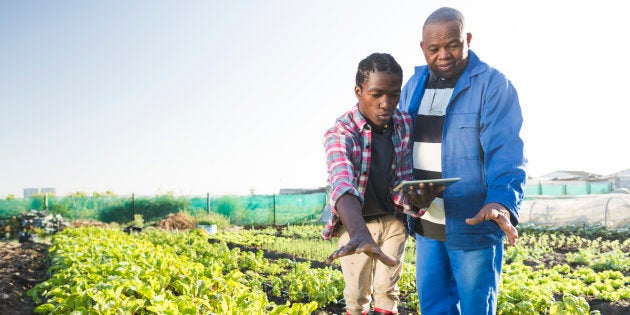
Infrastructural development as a challenge for smallholder farmers is not only limited to on-farm infrastructure. Off-farm infrastructure such as roads serve as one barrier facing smallholder farmers in terms of distribution and market access. I have lost count of the number of agricultural policies we have adopted as a country. It looks like every political figure is engraved to living to leave a legacy of having developed a policy that will bear his name for years to come.
The sad truth is, none of these seems to last. In fact, they are either reshuffled or names are changed with budget figures increased. In 2013, the South African government adopted the Integrated Food Security Production Intervention (IFSPI) and the Strategic Integrated Project (SIP) 11 policies. The sole purpose of the IFSPI was to afford the farming community and households an opportunity to increase production of basic food and therefore increase access and availability of such to attain basic food security at household and local level.
With the SIP 11 solely focused on improving investment in infrastructure that supports the expansion of agricultural production and employment, small-scale farming and rural development. This initiative was a flagship infrastructure project weighed down by the Presidential Infrastructure Coordinating Commission (PICC). To date, smallholder farmers do not have access to on-farm infrastructures such as store-rooms and cold-rooms to keep their products in good condition after harvest. Lack of access to facilities such as postharvest, storage and processing facilities constitutes a barrier to entry into agricultural markets since the emphasis of buyers is more on quality.
Since the implementation of these policies, we are yet to witness positive yields attributed to these projects. It is no secret that SIP 11 by its nature is complex, not least because it must support agriculture, forestry and fisheries, as well as multiple sub-sectors within each of these. The IFSPI is also by its nature complex. Anyhow the complexity and uncertainty of these projects should have fairly been reduced by taking stock of recently completed policies. Key amongst these is the Integrated Growth and Development Plan for Agriculture, Forestry and Fisheries (IGDP), the Agro-Processing Strategy, iterations of the Industrial Policy Action Plan (IPAP), and the Strategic Plan for Smallholder Support.
Not by accident, these policies have some shared prominences. Most obviously, they seek to redress the structural constraints that inhibit the rural sectors, especially those that favour large-scale producers over smaller-scale producers. Among the most important structural constraints are the high and increasing levels of concentration in the agro-processing sectors and food distribution networks, and the inadequacy of storage and transport infrastructure in some areas. These simultaneously limit employment in the commercial sector and inhibit the emergence of the smallholder sector.
One of the big challenges now is initiating a ruthless infrastructure investment programme without spawning herds of white elephants. The programmes are very slow. Land is sitting idle because of the lack of infrastructure but what the infrastructure is built and the production does not increase as hoped and expected? This problem cannot be resolved with unconditional certainty, but the risk can be minimised if there is enough attention to understanding market demand and how to meet it.
An administration that understands innovation and infrastructure development will contribute in channelling an efficient flow of scarce resources and technology.
This is the key problem with the IFSPI in its current form, and already evident in its pilot projects, whereby even at this relatively modest scale, the big problem is what to do with the harvest. This is one reason why the current form of the IFSPI is such a serious political liability. But understanding market demand also obliges us to appreciate that there are two very different strategies to be considered. As mentioned above, with regard to boosting maize production within the former homelands, the big opportunity is not to figure out how to get the maize out, but how to use local production to substitute for maize meal that is normally 'imported' in from other parts of South Africa.
This is where there is a potentially strong link between boosting maize production and promoting household food security, but this link is absent in the current version of the IFSPI; more importantly, it implies a particular approach to infrastructure development. On the other hand, if and when South Africa embarks on a massive biofuels drive, the logic will be very different. Here the question is how to get the production out of the former homelands, and at what point to undertake the processing. In this respect, drafting a SIP 11 business plan is likely to be badly hobbled by the fact that we still have no over-arching biofuels strategy.
In order to see progress on the afore-discussed policies, the following need to take precedence. Firstly, the IFSPI should be conceived of as a short-term plan to help ensure that the early phase of the SIP 11 bears fruit as quickly as possible. This means SIP 11 should take priority. Secondly, within this, a particular focus of SIP 11 should be 'closing the circle' within targeted former homeland areas between production, storage, milling, and marketing, so as to create sustainable production possibilities while lowering the cost of maize meal.
The third recommendation of less relevance to the IFSPI is that there is an urgent need for a clear, overarching national strategy on biofuels, the absence of which is an interruption to the development of the SIP 11 business plan. An administration that understands innovation and infrastructure development will contribute in channelling an efficient flow of scarce resources and technology. In the same way, if global traders and international business obey the norms and standards that encourage participation of developing country producers, this will promote value chain integration. We need to deliver on infrastructure projects.
